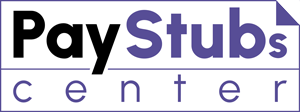What Is a Paystub?
A paystub, also known as a payslip or paycheck stub, is a document provided by an employer that details an employee's wages and deductions for a specific pay period. Paystubs are typically given alongside a paycheck, or they may be available electronically, especially with direct deposit payments.
The primary purpose of a paystub is to give employees a breakdown of their earnings and deductions for a specific pay period, such as a week, bi-weekly, or monthly. It serves as both a record of payment and a tool for financial transparency between the employer and employee.
Essential Information on a Paystub
A well-structured paystub provides a comprehensive overview of an employee’s earnings and deductions. Below is a breakdown of the essential components that should be included on a paystub:
1. Employee Information
The first section of the paystub typically contains personal details about the employee. This includes:
- Employee Name: The full legal name of the employee, so there is no confusion about who is receiving the pay.
- Employee ID: If your employer uses an internal tracking system, they might include a unique ID number that identifies you in their payroll system.
- Employee Address (optional): Some paystubs include the employee’s address, though this may not always be required, especially in digital versions.
- Pay Period Dates: This will show the start and end date of the pay period. It's important because it indicates the period during which the earnings and deductions were made.
Why It’s Important: Employee information ensures that the paystub is correctly attributed to the right person and clarifies the time period covered by the pay. This helps avoid any confusion or disputes about payment.
2. Employer Information
Just as your details are essential, the employer’s information should also be listed on the paystub. This typically includes:
- Employer Name: The company or organization’s name.
- Employer Address: Some paystubs may include the address of the employer, especially if it’s required for tax purposes or for employees to contact the payroll department.
Why It’s Important: The employer’s information helps identify the organization providing the wages and gives employees a clear way to contact them in case there are issues with the paystub or payment.
3. Gross Pay
Gross pay refers to the total earnings an employee receives before any deductions are made. This includes:
- Base Salary/Wages: This is the main amount an employee earns based on their hourly wage or salary agreement.
- Overtime Pay: If an employee worked overtime, the paystub should include the additional earnings from overtime hours worked.
- Bonuses: Any additional earnings such as performance bonuses, holiday bonuses, or incentive pay.
- Commissions: For employees whose pay is based partly on commission (such as salespeople), this amount should be clearly shown.
Why It’s Important: Gross pay provides a clear snapshot of how much an employee has earned before deductions. It’s the foundation for calculating taxes, benefits, and other withholdings.
4. Deductions
Deductions are the amounts taken from an employee's gross pay, and they typically fall into two categories: mandatory and voluntary.
Mandatory Deductions
These are required by law, and all employees must have them deducted from their pay. They include:
- Federal Income Tax: This is the amount withheld by the employer and sent to the federal government based on your earnings. The exact amount is determined by your W-4 form, which you submit to your employer.
- State and Local Taxes: If applicable, these taxes are withheld based on your state and local tax rates.
- Social Security Tax: This is a mandatory deduction for the Social Security program. In 2023, the rate is 6.2% for employees, but this may change year-to-year.
- Medicare Tax: Another mandatory deduction for the Medicare program. The rate is 1.45% for employees, and additional taxes may apply to high earners.
- Unemployment Insurance: Employers often deduct a portion for unemployment insurance, although the exact deductions vary by state.
Voluntary Deductions
These are deductions that employees can choose to participate in. Some common examples include:
- Health Insurance Premiums: If an employee participates in a company-sponsored health plan, the premiums are often deducted directly from their pay.
- Retirement Contributions (401(k), IRA, etc.): If employees contribute to retirement savings plans, like a 401(k), those contributions will appear as deductions.
- Life Insurance Premiums: If the employer provides life insurance or employees purchase additional life insurance coverage, the premiums will appear as deductions.
- Union Dues: If an employee is part of a union, the union dues may be automatically deducted from their paycheck.
Why It’s Important: Deductions are crucial because they show the amounts that are legally required or voluntarily chosen by the employee to be withheld from their pay. Understanding these deductions is vital for employees to assess how their take-home pay compares to their gross pay.
5. Net Pay
Net pay, also called "take-home pay," is the amount an employee actually receives after all deductions are taken out of their gross pay. It’s the final amount that the employee will receive in their paycheck.
Why It’s Important: Net pay is the amount employees can actually use for their living expenses, savings, and other financial goals. It’s critical for employees to verify that this figure matches their expectations based on their gross pay and deductions.
6. Year-to-Date (YTD) Totals
Many paystubs will also include year-to-date totals for earnings, deductions, and taxes. This shows the cumulative totals from the beginning of the year to the current pay period.
- YTD Earnings: The total gross income earned so far in the year.
- YTD Deductions: The total amount that has been deducted for taxes, benefits, and other withholdings.
- YTD Net Pay: The total amount the employee has received after deductions so far.
Why It’s Important: YTD totals are especially useful during tax season or for employees who want to track their earnings and deductions over the year. It provides a snapshot of an employee’s financial situation in real-time and makes tax filing easier.
7. Pay Period Information
This section includes the start and end dates of the current pay period, as well as the date the paycheck is issued.
Why It’s Important: Pay period information ensures that the employee knows exactly which days the pay is for. It helps clarify any discrepancies that may arise if an employee believes they were underpaid or if they need to reference a specific pay period for personal financial tracking.
8. Other Information (Optional)
Depending on the employer or the type of paystub, additional information may be included, such as:
- Accrued Vacation or Sick Leave: Some employers list any earned vacation or sick days on the paystub.
- Reimbursement for Expenses: If the employee was reimbursed for business expenses, those amounts may also appear on the paystub.
- Loan or Wage Garnishments: If the employee is paying off loans or has wage garnishments, these deductions will be listed.
Why It’s Important: This extra information can provide clarity about the employee’s benefits, any outstanding payments, and how much paid time off they have accumulated. It also gives employees transparency on things like reimbursements or garnishments, preventing confusion.
Common Paystub Mistakes to Avoid
While a paystub is an essential tool for both employers and employees, mistakes can happen. Here are some common errors to watch out for:
- Incorrect Deduction Amounts: Sometimes, payroll systems can calculate deductions incorrectly, leading to over- or under-deductions for taxes or benefits. Employees should always check their paystubs for accuracy.
- Incorrect Hours Worked: If overtime or regular hours are recorded incorrectly, the employee may not be paid accurately. Always double-check hours worked against the paystub.
- Missing YTD Totals: Some paystubs may fail to include YTD totals, making it difficult for employees to track their cumulative earnings and deductions.
Conclusion
A paystub is more than just a receipt for work completed. It provides crucial details about an employee’s earnings, deductions, and the taxes withheld. By understanding what information should be on your paystub, you can ensure that it is accurate and reflects your financial situation clearly.
Employees should always review their paystubs to ensure that the information is correct and that there are no discrepancies. Likewise, employers need to ensure they provide all the necessary information on paystubs to maintain transparency, legal compliance, and trust with their employees.
If you’re an employee or an employer looking to generate accurate paystubs, consider using an online paystub generator to ensure that your documents are professional, accurate, and compliant with regulations.


